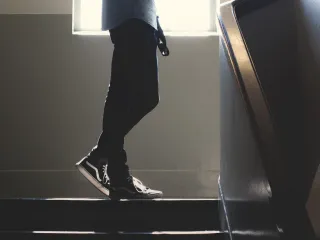Meeting the growing challenges of the well-being and productivity of cities and urban communities requires new, multidisciplinary service models and collaboration across organisational boundaries. In Rovaniemi, the Together Towards Participation (ESF) project – developing, piloting and implementing public and third sector integration models – utilised VTT's expertise in system dynamics modelling and service design for developing multidisciplinary service concepts and modelling the impact of the collaborative activities in the region.
Key facts
Support for the most vulnerable young people by means of collaboration between the public and third sectors
A common view across the field of services with the help of design of multidisciplinary service models and concepts
Understanding of impact mechanisms affecting young people's lives with the help of system modelling
The urban context is undergoing an increasingly extensive transition and a change in operating models towards service orientation, in which value and well-being are produced in close collaboration with local residents and networks of actors in urban communities. The key objective of the transition is to enable well-being and sustainable growth, while supporting the diverse needs of the community, and leveraging the capabilities and resources of various actors in an agile manner. Novel communal operating models are needed in development and innovation activities as well as in daily service work with customers. The social problems faced by urban communities are complex and systemic, and there are no simple solutions to them. The management of change requires people-oriented tools and an understanding of the comprehensive, systemic impacts of decisions and actions. An approach that combines methods of service design and system modelling provides an excellent basis for this.
Low-threshold services through collaboration between the public and third sectors
The Together Towards Participation project funded by the European Social Fund, being implemented in the Rovaniemi region, has successfully contributed to promoting this approach based on service orientation and multidisciplinary cooperation. The project has developed, piloted and implemented integration models in which the public and third sectors implement low-threshold services for individuals and groups to support the most vulnerable 16–29-year-olds. In addition to unemployment, the young people participating in the project's activities who are not in education or working life often face also other challenges that make it difficult for them to progress on the study and employment path. The aim is, through close, inclusive and multiprofessional cooperation that addresses young people's personal needs, to reach out more effectively to the target group and to support them forward on their journey towards education and working life.
In spring 2020, the key actors of the project team, the Deaconess Foundation's Vamos Rovaniemi, Nuorten Ystävät Ry association and the City of Rovaniemi, implemented a six-week cooperation project with VTT system dynamics modelling and service design experts. The aim of the project was to crystallise the multidisciplinary and customer-oriented service models of the project and to model the impact and role of the activities in the wider field of services in the region. The VTT project team consisted of Henri Wiman and Peter Ylén, VTT Smart City experts as well as Tatu Vienamo and Asko Kokkonen from the VTT Design team. The project was divided into three two-week phases:

Involving the project's customers, coaches and stakeholders in design process
Even though the Together Towards Participation project in itself involved various stakeholders and young people in the development work and daily activities, the service design project scheduled for the spring of the project's second year offered an excellent platform for intensive co-development and shared vision building. During the project, VTT's system modelling team and service design team interviewed target group representatives, individual and group coaches in the project team, as well as key stakeholders and partners. In the interviews, the participants openly shared their experiences of the coaching in the Together towards Inclusion project and the key benefits and challenges of multidisciplinary cooperation in the field of services in Rovaniemi.
Based on the understanding built with the help of the interviews, VTT prepared two more extensive, participatory workshops tailored for online environment and remote work. In the workshops, the Together Towards Participation project team and its key stakeholders were brought together in a facilitated manner to formulate a vision on common operating methods, service and customer journeys, the roles of different actors and the objectives and mechanisms of impact.
Building a shared understanding through systems modelling and service design
Throughout the six-week project, alongside running the more extensive, participatory workshops, VTT also accelerated the design and modelling of service models and operating methods in close collaboration with the core project team. The use of user profiles and customer journeys, actor maps and systemic dynamics models made it possible to examine the detailed structure of service models and their relationship with the variables affecting the comprehensive well-being and the level of activeness of young people in the target group. The approach contributed to establishing an understanding of the roles that the different actors play along the shared customer journey built around young people's life situation.
Service design and system modelling clarified the effective operating models and customer journeys implemented in the project in a great and clear manner. Young people's perspectives deepen the understanding of the needs and challenges related to the field of services. The insights of the service design project will help us, in collaboration with partners, build supportive and safe journeys for the young people's changing needs, taking them forward in their lives, now and in the future.
Supporting broader, positive development and continuity
Responding to the multidimensional and systemic challenges of the urban context requires new methods that combine different competence areas, and bring a long-term approach and openness to cooperation across the broad field of services. The shared understanding and concrete models established during the Together Towards Participation service design project support the discussion in the decision-making fora of the urban community and build continuity for the common operating model also for the future.
At VTT, we want to support cities and urban communities in moving towards new, communal operating models both in service provision and the development of new approaches. By working closely together, we can solve both current and future challenges – and build holistic well-being and vitality in the society.





